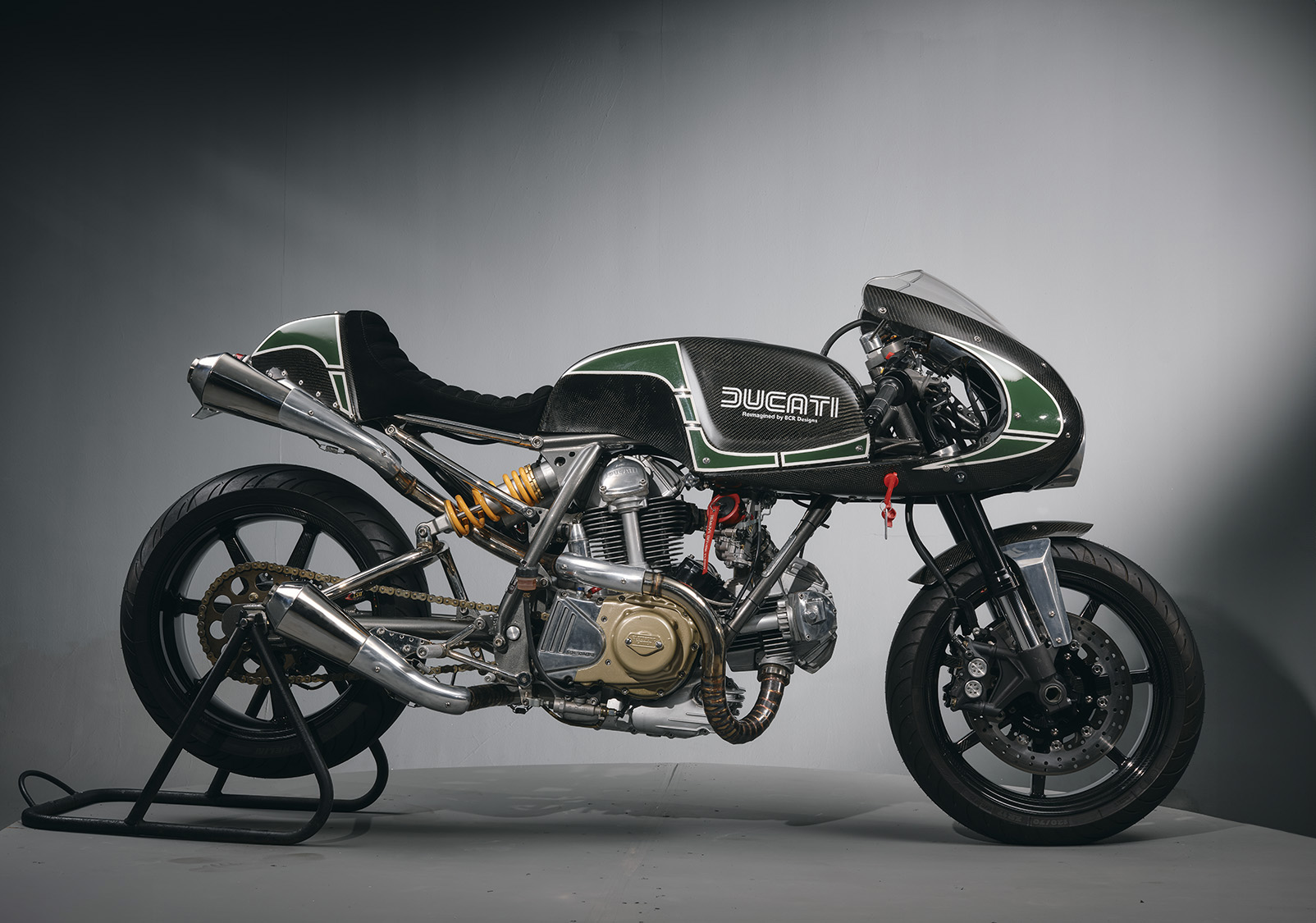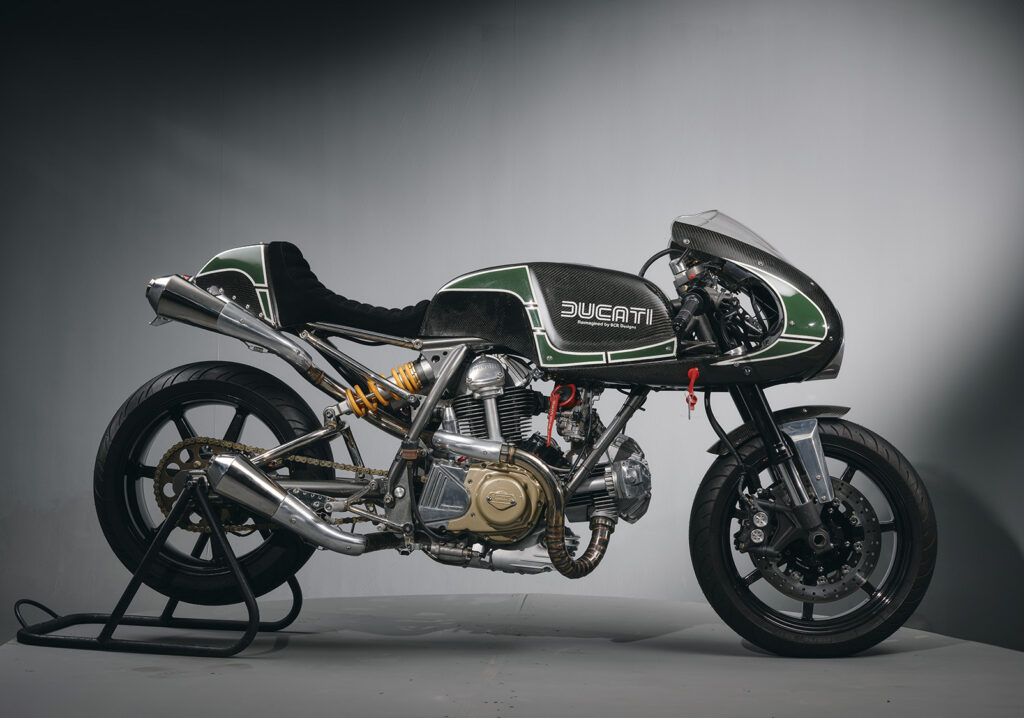
It is one of the most well-known silhouettes in all of motorcycle history, a race replica and a tribute to a legend that helped to save a giant of the industry. But to be frank, the first run in 1979 of Ducati 900 Mike Hailwood Replicas, was a pretty terrible bike and only ever intended as a one-off for the British market. But by the time the Ducati 1000 MHR Mille version had rolled around a few years later, the company had a true sales winner and a legend had been born. So, purists close your eyes, because this incredible custom was once that highly sought-after machine. Now, having been built from the ground up by OG legends of the game, Benjie’s Cafe Racers, the famous Ducati is now arguably far more unique, and it’s also a hell of a lot better to ride.
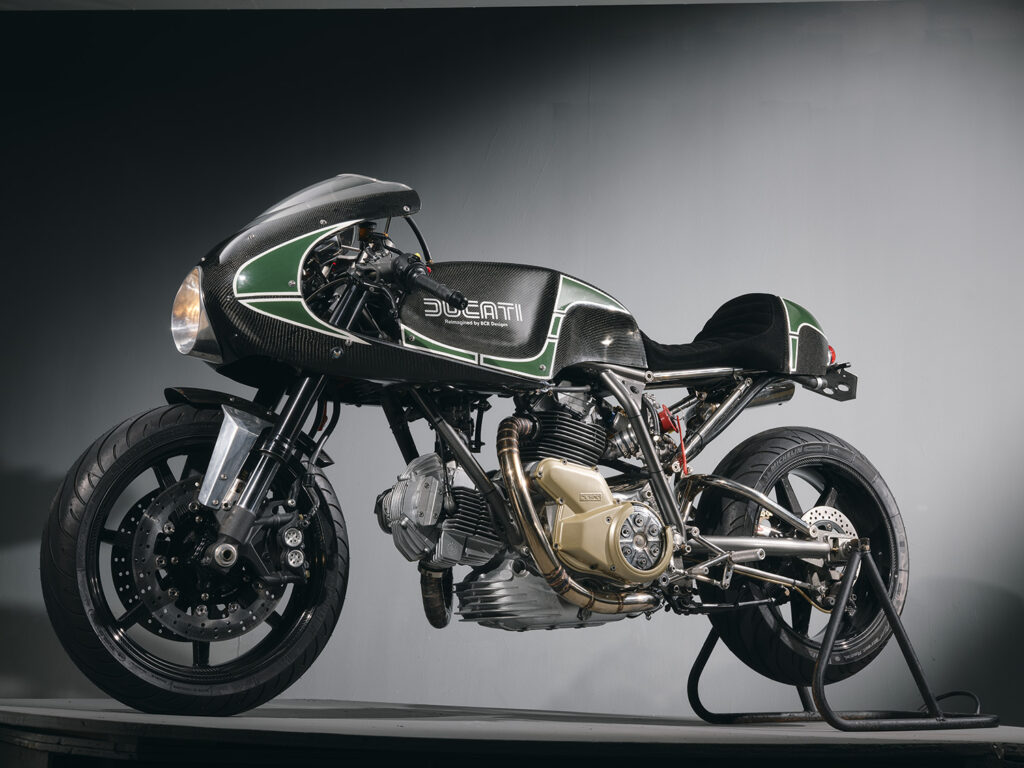
Anyone who has ever googled the term ‘Cafe Racer’ has no doubt come across the website and work of Benjie Flipprboi, and his team at BCR. They’ve been creating and selling parts for customs long before it was considered cool, and the US-based outfit helped to pioneer the idea of fitting ’60s classically styled bodywork to more modern Japanese machines. But they also build a hell of a cool one-off custom themselves, and when a customer turned up with a MHR Mille, the whole team was incredibly excited to get their hands dirty. And the owner was clear when it came to molesting a legend, “Yes, I know its history, but I want something unique. It’s my bike, my money. F the purists.”
More than seven thousand Hailwood Reps were built by Ducati, it was in fact the company’s top selling bike at one point, but being the superior version, the Mille is a sort after example. But as Benjie tells us, by the time he got his hands on her, the bike was far from factory fresh. “When the bike arrived, it was clear it had seen better days. A relic of a 1990s restoration, the paint was faded, tires dry-rotted, oil leaked, and many original parts had been replaced with cheap aftermarket plastics.” Unsurprisingly for a Ducati of the era that had been poorly maintained, the electrics and starter were shot and the carbs needed a full rebuild.
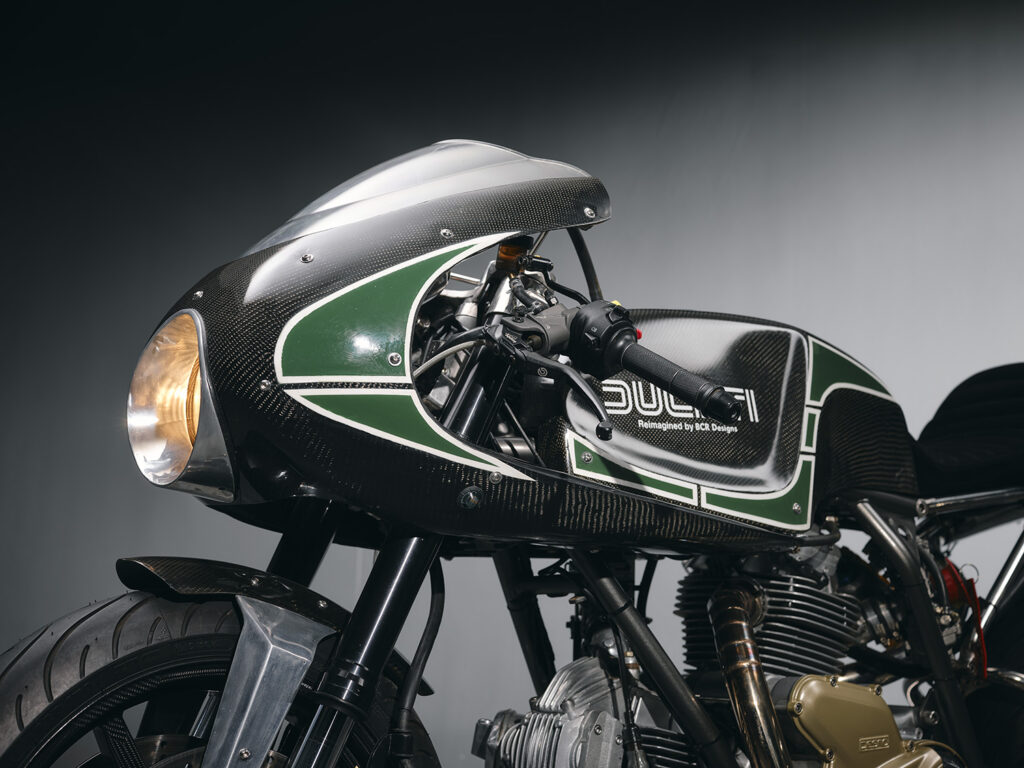
So, a plan was conceived to build a truly unique custom, that paid tribute to the original, picked up inspiration from the turn of the century models and then improved the way the bike looked and performed in every single way. Starting with the frame would ensure there was a perfect foundation, and the major change comes by cutting off the long loopy subframe and replacing it with a more modern interpretation. Fabricated out of stainless steel, the new piece has a slight upsweep to get the rider tucked in and is bolted on with new mounts which are gusseted at the union. But this change also meant the upper shock mounts were now gone.
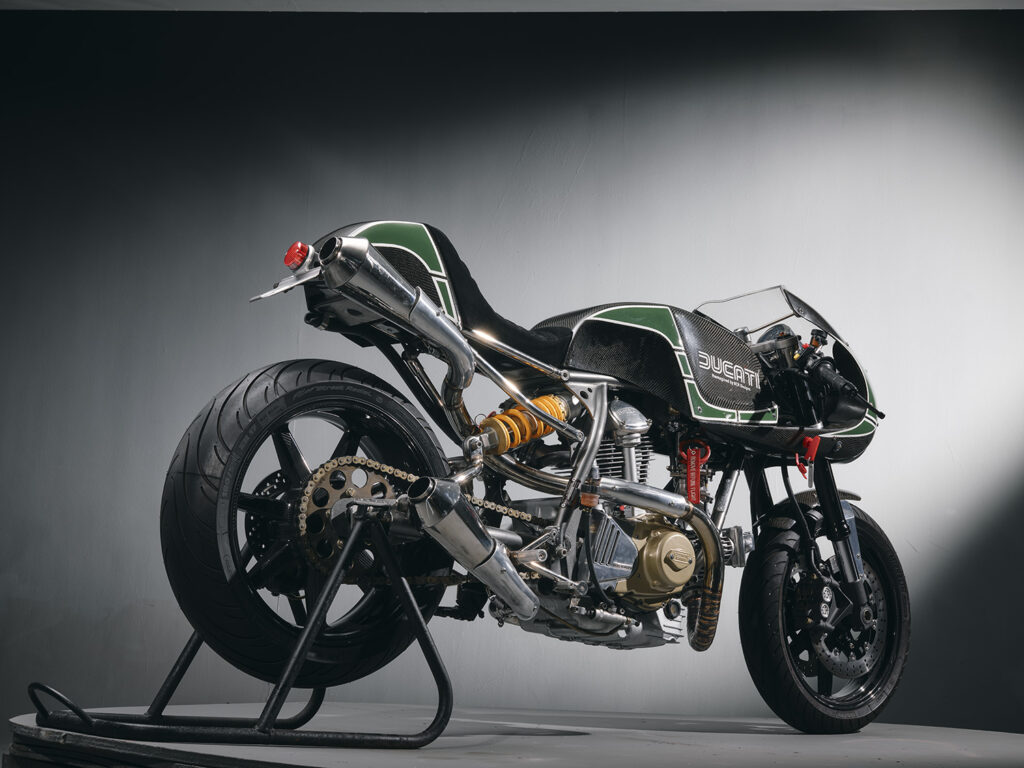
This, of course, was of no concern to Benjie, who had always planned to convert the classic bike to a mono-shock setup. To achieve this, the swingarm is heavily modified and features an all-new upper loop that helps to support the offset shock, a setup that is a staple of modern Ducs. To give the front end the same sort of handling prowess, the old suspension is thrown away and a modern USD fork setup has been adapted to fit the old frame. This change also allows for the braking package to get a serious upgrade, and the calipers give the game away, with Yamaha components used for the front end and fed their power via a high-end Brembo radial master cylinder.
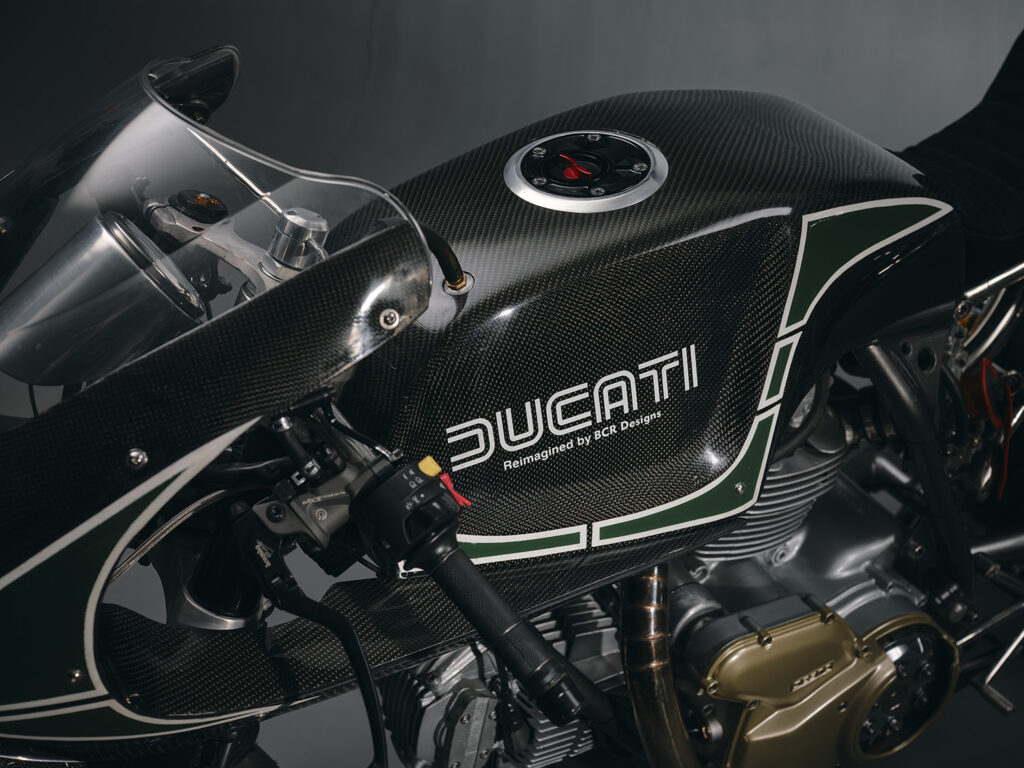
Now with the perfect base, the bike could be built up and with the big fenders gone, there is a standout feature. “The original tank’s shape is unmistakable, one of the most iconic in motorcycle history. We retained its overall shape but adjusted the dimensions for better proportions,” Benjie explains. A steel mould was fabricated and from this the full carbon fibre cover was produced, with an aluminium fuel cell underneath that is only visible via the race-style filler. “For a modern touch that still harmonised with the tank and our custom subframe, we designed a seat with a sleeker profile.”
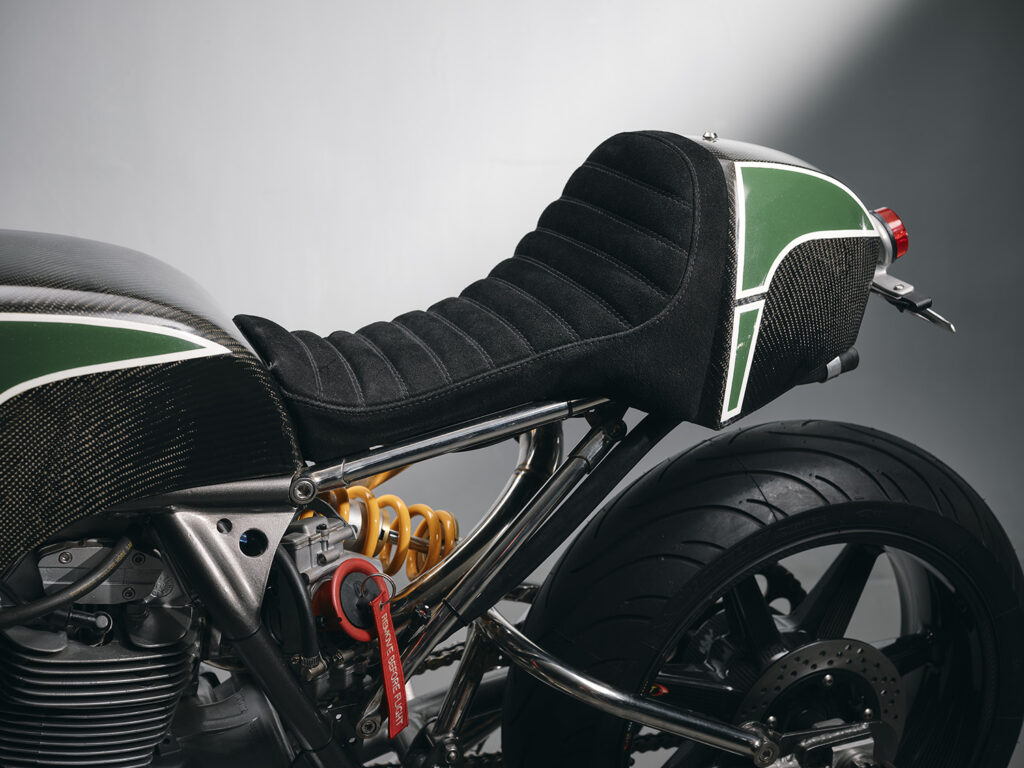
This piece too was first moulded in steel before being produced in a stunning carbon fibre finish, and it’s then been topped with a seat that is upholstered with suede leather and accented with white ribbed stitching. The front fairing was produced like the rest of the bodywork and is a truly, stunning piece, long and narrow, it is simply flawless. “We mounted the headlight lower on the fairing and encased it in an aluminium bezel, finishing with carbon fibre panels on the sides for a polished look.” The finish sees the frame hit with a gunmetal grey, while the original red is now all beautiful bare carbon, complemented by Ducati MHR green and white graphics.
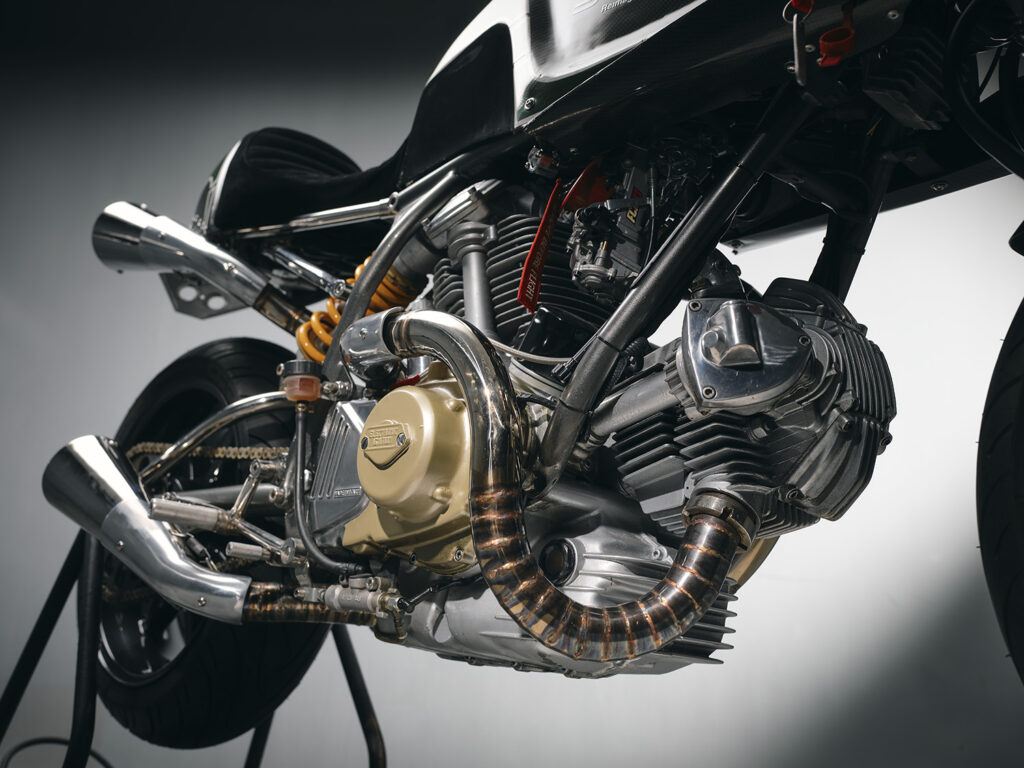
Of course, the heart of the Mille is the final run of bevel-drive twins to come out of Ducati, and they remain an engine beloved by the Ducatisti. Benjie has ensured that this one looks a million dollars, brilliantly rebuilt and refinished. Having given the old carbs the thumbs down, fuel now flows into the beast via a set of open stack FCRs for a super crisp throttle response. “We opted for a distinctive split 2-into-2 stainless exhaust with pie-cut bends. The front cylinder’s exhaust exits beneath the seat, while the rear cylinder’s exhaust runs under the swingarm.” Then to finish off the build in a way I’m sure Mike the Bike would love, a set of carbon fibre BST wheels ditches the crack prone items and like the rest of the build, simply looks a million bucks.
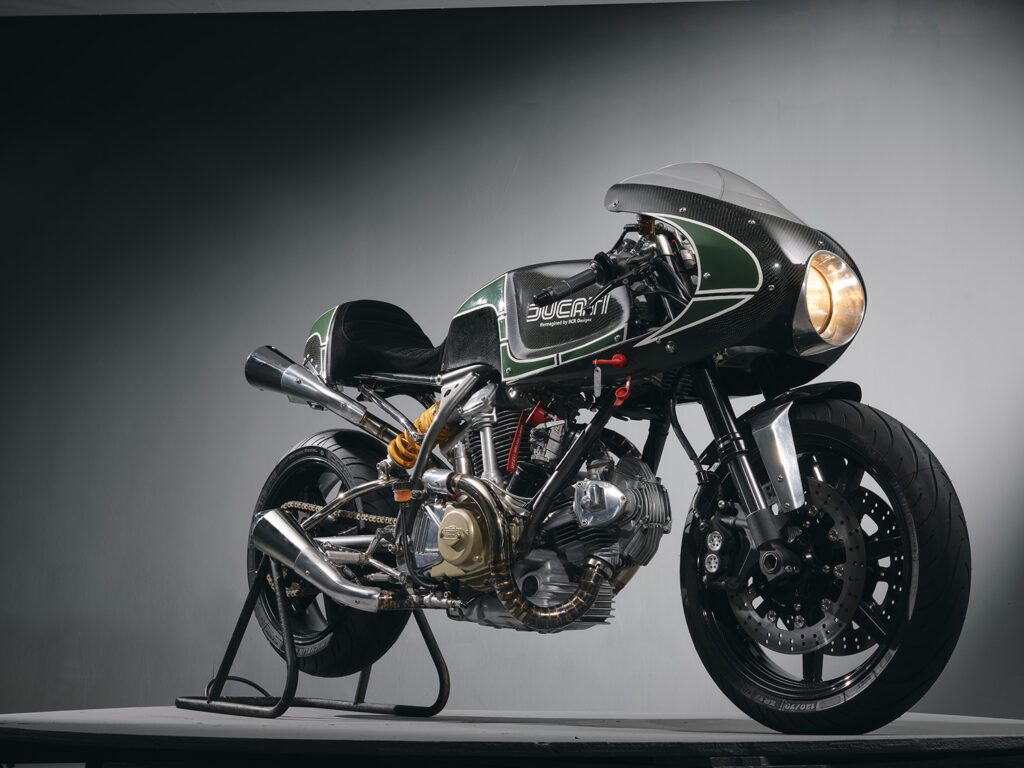
[ BCR | Photography by Black Sheep Manila ]
